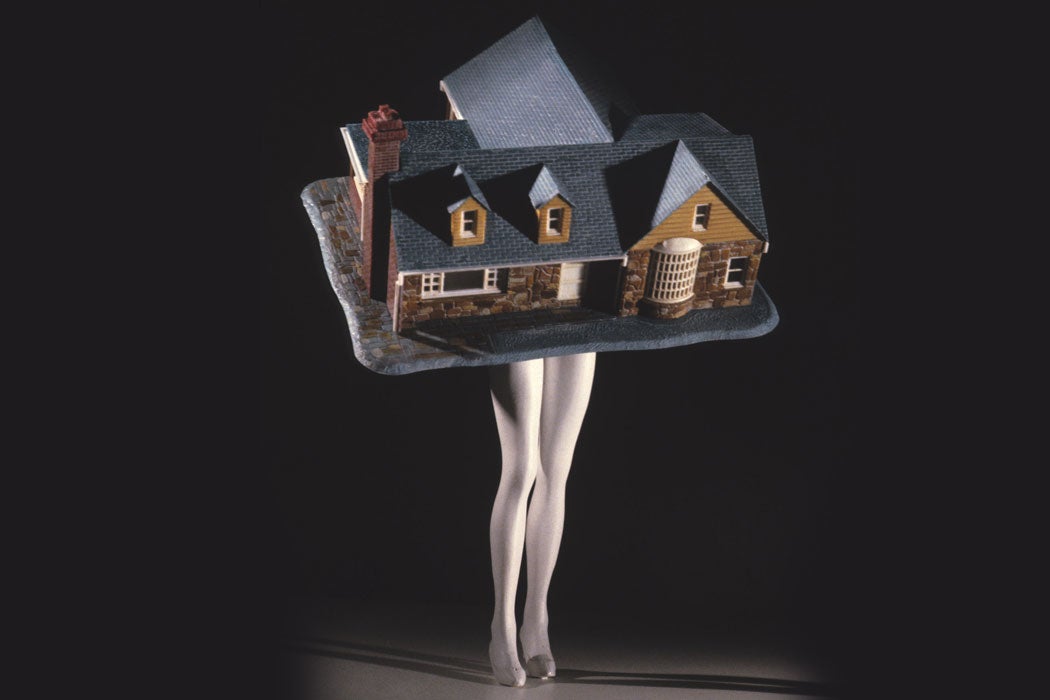In 1972, artists Judy Chicago and Miriam Schapiro created Womanhouse, an experiential and experimental feminist art installation featuring installation, sculpture, textile, and performance art in a run-down Hollywood home. This spring, a new installment, called Women House, showcases a new generation of feminist artists at the National Museum of Women in the Arts in Washington, D.C.
Although Women House will only showcase two of the twenty-three original artists featured in the original (the creators Chicago and Schapiro), it’s clear that Womanhouse laid the foundation for current feminist art practice and theory. Beginning in 1971, Chicago and Schapiro began working towards the creation of Womanhouse. This endeavor grew out of the newfound Feminist Art Program at California Institute of the Arts, with twenty-one women studying under their tutelage.
As Miriam Schapiro recalled in 1987, “[o]ur purpose was to remake the old house into a place of dreams and fantasies. Each room would be transformed into a nonfunctioning art environment.” There was the Nurturant Kitchen (by Susan Frazier, Vicki Hodgetts, and Robin Weltsch), Lipstick Bathroom (by Camille Grey), and Shoe Closet (by Beth Bachenheimer), to name a few of the installations.
In 2006, art historian Temma Balducci explained the powerful methodology that the artists engaged in with Womanhouse. She writes, “The artists who produced Womanhouse used parody and exaggeration as tools to undermine essentialist stereotypes about women that limited them to domestic roles, making it one of the earliest feminist artworks to question the boundaries between essential and constructed meaning.”
Viewers would wind their way through this home, confronted and challenged by parodies of societal expectations. In Shoe Closet, for instance, viewers encountered a closet packed with painted high heels, suggesting the transformation of woman from subject to object as a housewife “who must continually change her costume and mask for her husband’s pleasure.”
Balducci considers why Womanhouse “generated so little scholarly interest.” The reasons she examines are multi-layered, though ultimately timing might have had to do with it, since it “was produced so early” in the feminist art movement that “the critical language and understanding were not yet in place to deal with the complicated issues broached in the piece.”
Schapiro echoes this sentiment in her own recollections: “[i]t was 1971, the quiet revolution had already begun and some of us were part of it. We were being told by brilliant, creative women that we could and would fulfill our own destinies.”
With Women House, the National Museum of Women in the Arts invites thirty-six global artists to challenge and explore constructions of gender and the domestic sphere. While today’s exhibit may not prove to be as groundbreaking as the 1972 iteration, it is sure to pay tribute to its predecessor. Schapiro argued that Womanhouse introduced “content into mainstream modern art…based on the lives of women.” Women House continues in this vein, inviting a diverse array of voices and content into this ongoing conversation.







